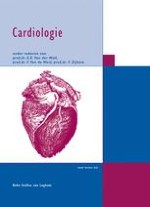Gepubliceerd in:
2008 | OriginalPaper | Hoofdstuk
15 Cardiovasculaire MRI
Samenvatting
Wanneer kernspinresonantietomografie, meestal aangeduid met de Angelsaksische term ‘magnetic resonance imaging’ (MRI), wordt toegepast om afbeeldingen te maken van hart en vaten, spreekt men ook wel van ‘cardiovascular magnetic resonance’ (CMR). Hiermee wordt aangegeven dat de techniek specifieke aanpassingen vereist om tegemoet te komen aan de pulsatiele beweging van hart en vaten. CMR werd ongeveer 25 jaar geleden geïntroduceerd voor toepassing in de kliniek, en heeft sindsdien technisch gezien een stormachtige ontwikkeling doorgemaakt. Dit heeft geleid tot een grote stroom klinische onderzoeken, maar het gebruik van CMR in de dagelijkse praktijk is bescheiden gebleven, voornamelijk wegens de relatief hoge kosten en het gebrek aan beschikbare apparatuur en expertise. De laatste jaren is in de cardiologie echter een duidelijke kentering waarneembaar, die samenhangt met de toegenomen mogelijkheden om CMR toe te passen bij de diagnostiek van ischemisch en niet-ischemisch hartfalen.
